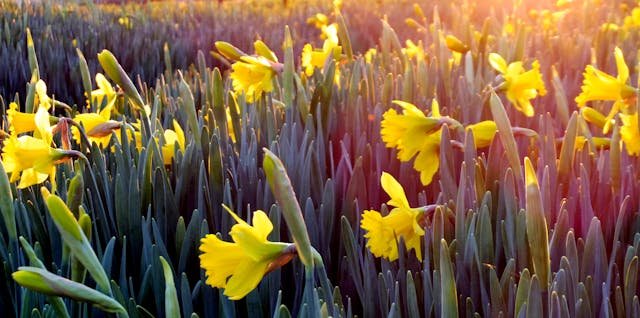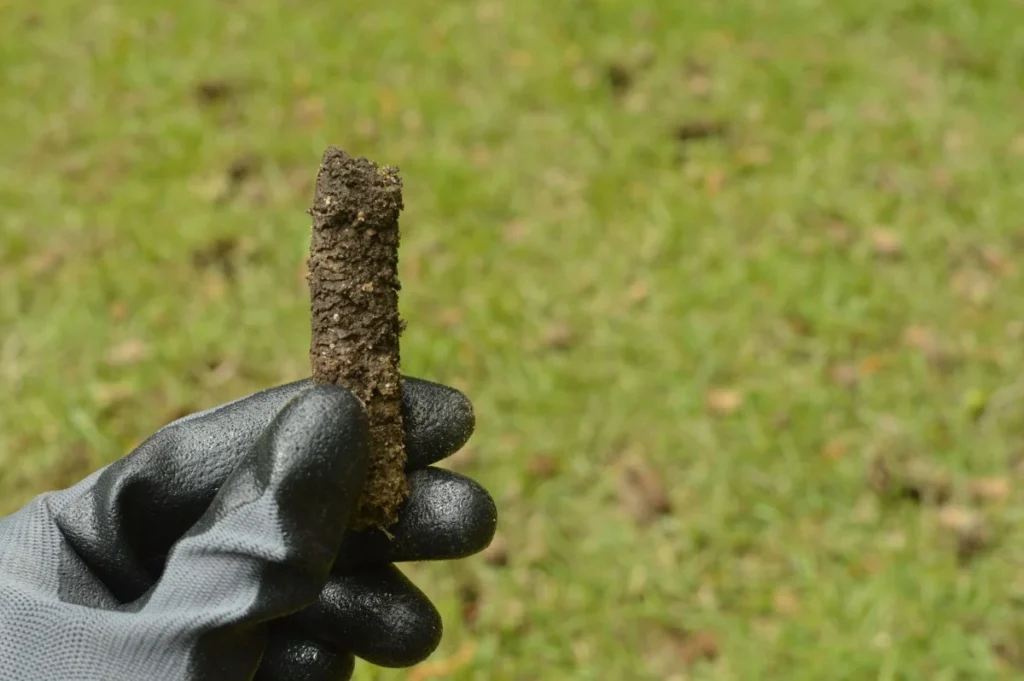Fall is often seen as the end of the growing season, but it’s actually one of the best times to plant. The cooler weather is easier on both plants and gardeners, and the soil is still warm enough to encourage strong root growth. Planting in fall also gives your garden a head start for spring, ensuring lush blooms and hearty harvests when the warmer months arrive.
In this article, we’ll explore what to plant in fall, from vibrant flowers to hearty vegetables. You’ll discover the best plants for fall planting, tips for successful gardening during this season, and how to set up your garden for a thriving, beautiful spring.

Why Fall is the Best Time for Planting
Soil Warmth vs. Cooler Air
Fall provides the ideal mix of warm soil and cooler air temperatures. While the days are more comfortable for working outside, the ground retains summer heat, helping roots grow faster and stronger. This makes it a great season for establishing plants to plant during fall.
Less Watering Needed
With cooler temperatures and more natural rainfall, newly planted flowers and vegetables require much less watering than they would during the hot summer months. This means less maintenance for gardeners and better conditions for flowers to grow in the fall.
Stronger Root Systems
During fall, plants put more energy into developing their roots instead of growing leaves or flowers. This results in stronger, deeper root systems that help them survive the winter and thrive in spring.
Fewer Pests and Diseases
Fall’s cooler weather naturally reduces the number of pests and diseases that can harm new plants. This gives plants to plant during fall a better chance to establish themselves without battling common summer garden problems.
What are the Best Vegetables to Plant in Fall
Leafy Greens: Spinach, Lettuce, Kale
Fall is the perfect season to plant cool-weather leafy greens like spinach, lettuce, and kale. These crops love the crisp air and can tolerate light frosts, making them some of the easiest and most rewarding plants to plant during fall. They grow quickly and can often be harvested well into the cooler months.
Root Vegetables: Carrots, Radishes, Beets
Root vegetables thrive when planted in fall’s cooler temperatures. Carrots, radishes, and beets develop better flavor and texture as the weather gets colder. Planting these flowers to grow in the fall — or rather, hearty root crops — ensures a sweet, crisp harvest before the ground freezes.
Garlic and Onions for Next Year’s Harvest
If you’re thinking ahead, fall is the perfect time to plant garlic and onions. They establish their roots before winter sets in, then lie dormant until spring, when they resume growing. By planting now, you’ll enjoy a hearty, flavorful harvest next summer.
Tips for Successful Fall Vegetable Gardening
- Choose fast-maturing varieties to ensure a harvest before hard frosts.
- Prepare your soil by adding compost for extra nutrients.
- Use mulch to protect young plants from early freezes.
- Keep an eye on the weather and be ready to cover plants if a sudden cold snap hits.
With the right planning and care, fall gardening can be just as productive — and often easier — than spring planting!

What are the Flowers to Plant in Fall for Spring Blooms
Bulbs: Tulips, Daffodils, Crocuses
One of the best ways to prepare for a colorful spring is by planting flower bulbs in the fall. Tulips, daffodils, and crocuses are some of the most popular flowers to grow in the fall. These bulbs need the cold winter months to develop properly, rewarding you with vibrant blooms as soon as the weather warms up.
Perennials: Peonies, Daylilies, Asters
Fall is also a great time for planting autumn flowers that come back year after year. Peonies, daylilies, and asters establish strong roots in the cooler soil, allowing them to burst into full bloom the following spring and summer. Planting these hardy perennials now means less work — and more beauty — in future seasons.
Fall Care Tips for Bulbs and Flowers
- Plant bulbs at the right depth, usually two to three times as deep as the bulb’s height.
- Choose a sunny, well-draining spot for your flowers and plants to plant in the fall.
- Add a layer of mulch after planting to protect bulbs from harsh winter temperatures.
- Water thoroughly after planting to help roots begin to establish.
By choosing the right flowers and giving them proper care, your fall efforts will lead to a stunning, thriving garden when spring arrives!
Trees and Shrubs to Plant in Fall
Deciduous Trees: Maple, Oak, Birch
Fall is an excellent time to plant deciduous trees like maple, oak, and birch. With warm soil and cooler air, these trees can focus on developing strong roots before winter sets in. Planting in autumn gives them a healthy head start, making them more resilient when spring growth kicks in.
Evergreen Shrubs: Boxwood, Holly, Juniper
Evergreen shrubs such as boxwood, holly, and juniper also thrive when planted in fall. These hardy plants maintain their color year-round and benefit from fall’s milder conditions, establishing deep roots that help them survive even harsh winters. Adding these evergreens now ensures structure and beauty in your garden all year long.
How to Properly Plant and Care for Trees and Shrubs in Autumn
- Dig a hole twice as wide as the root ball but no deeper.
- Loosen the roots gently before planting to encourage outward growth.
- Backfill with native soil and water thoroughly after planting.
- Apply a layer of mulch around the base to retain moisture and regulate soil temperature.
- Water regularly through fall if rainfall is light, helping new roots establish before the ground freezes.
With the right care, planting trees and shrubs in fall sets the foundation for a strong, thriving landscape that lasts for years!
Fall Lawn Care and Grass Planting
Best Grass Seeds for Fall
Fall is the best time to plant cool-season grasses like fescue, ryegrass, and Kentucky bluegrass. The warm soil and mild temperatures create ideal conditions for quick germination and strong root development, setting the stage for a thick, healthy lawn next spring.
Overseeding Tips
If your lawn is looking thin or patchy, fall is perfect for overseeding. Mow your existing lawn short, rake away debris, and spread grass seed evenly. Lightly water daily until the seeds germinate to help fill in bare spots and create a denser, more resilient lawn.
Fertilization and Soil Prep for a Lush Spring Lawn
Apply a slow-release fertilizer after seeding to feed young roots through the fall and winter. Aerating your soil before planting also helps grass roots penetrate deeply and access nutrients more easily.
What Herbs You Can Still Plant in Fall
Cilantro, Parsley, Thyme
Some herbs thrive in cooler temperatures, making them excellent plants to plant during fall. Cilantro, parsley, and thyme all love the crisp air and can survive light frosts. Plant them in a sunny spot with well-draining soil, and you’ll enjoy fresh herbs well into the season.
How to Grow Herbs Indoors if It’s Too Cold Outside
If temperatures drop too quickly, you can easily move herb gardening indoors. Plant cilantro, parsley, and thyme in pots with good drainage and place them near a sunny window. Indoor herbs need about 6 hours of sunlight daily and occasional watering to stay healthy and productive.
Fall Garden Planting Tips for Success
Timing: Knowing Your First Frost Date
One of the most important parts of fall planting is timing. Know your area’s average first frost date and plan to plant 6–8 weeks before it hits. This gives plants enough time to establish strong roots.
Soil Preparation Checklist
- Clear old plants and debris.
- Add compost or organic matter to enrich the soil.
- Loosen the soil to improve drainage and root penetration.
- Test the soil pH if possible and adjust if needed.
Mulching for Protection
Apply a 2–3 inch layer of mulch around your plants to insulate the soil, retain moisture, and protect roots from temperature swings. Mulching is especially important for flowers and plants to plant in the fall.
Watering Advice for Cooler Months
Even in cooler weather, new plants need regular watering to establish roots. Water deeply but less frequently, making sure the soil stays moist but not soggy. Pay special attention before the ground freezes to lock in needed moisture.
What Are The Common Mistakes to Avoid When Planting in Fall
Planting Too Late
Timing is everything when it comes to fall planting. If you plant too late in the season, your flowers and plants to plant in the fall might not have enough time to establish strong roots before the ground freezes. Always aim to plant at least 6–8 weeks before your area’s first expected frost date for the best results.
Ignoring Soil Conditions
Healthy soil is the foundation of a successful garden. Skipping soil prep can lead to poor growth or even plant failure. Before planting, always check the soil’s health, loosen compacted areas, and mix in compost or organic matter to give your plants a nutrient-rich environment to thrive.
Overwatering in Cooler Temps
While young plants still need water, cooler fall temperatures mean they don’t dry out as quickly. Overwatering can lead to root rot and other diseases. Instead, water deeply but less frequently, and always check soil moisture before adding more.
Conclusion
Fall is one of the most rewarding times to get your hands in the soil and set the stage for a beautiful, thriving garden. With cooler air, warm soil, fewer pests, and strong root development, planting in fall gives your plants the best possible start. Whether you’re adding vegetables, flowers, trees, or herbs, knowing what to plant in fall can make all the difference for a lush, colorful spring. By choosing the right plants, preparing your soil, and avoiding common mistakes, you’ll create a garden that rewards you for seasons to come. Happy fall planting!

Anamika is a passionate writer for Eco365Store.com, specializing in topics that inspire a cleaner, greener world. With expertise in home cleaning, recycling, and eco-friendly solutions, she crafts engaging and informative articles that help readers adopt sustainable practices in their daily lives.
